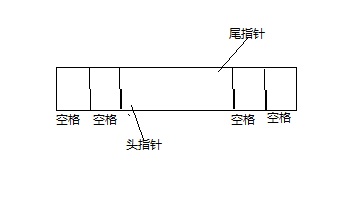字符串內存圖如下:

引入頭文件:
1 #include<stdlib.h> 2 #include<stdio.h> 3 #include<string.h>
函數原型:
1 void trim(char *strIn /*in*/, char *strOut /*in*/);
實現方法一:
void trim(char *strIn, char *strOut){
int i, j ;
i = 0;
j = strlen(strIn) - 1;
while(strIn[i] == ' ')
++i;
while(strIn[j] == ' ')
--j;
strncpy(strOut, strIn + i , j - i + 1);
strOut[j - i + 1] = '\0';
}
實現方法二:
1 void trim(char *strIn, char *strOut){
2
3 char *start, *end, *temp;//定義去除空格後字符串的頭尾指針和遍歷指針
4
5 temp = strIn;
6
7 while (*temp == ' '){
8 ++temp;
9 }
10
11 start = temp; //求得頭指針
12
13 temp = strIn + strlen(strIn) - 1; //得到原字符串最後一個字符的指針(不是'\0')
14
15 printf("%c\n", *temp);
16
17 while (*temp == ' '){
18 --temp;
19 }
20
21 end = temp; //求得尾指針
22
23
24 for(strIn = start; strIn <= end; ){
25 *strOut++ = *strIn++;
26 }
27
28 *strOut = '\0';
29 }
測試:
1 void main(){
2 char *strIn = " ak kl p ";
3
4 char strOut[100];
5
6 trim(strIn, strOut);
7
8 printf("*%s*\n",strOut);
9
10 system("pause");
11 }